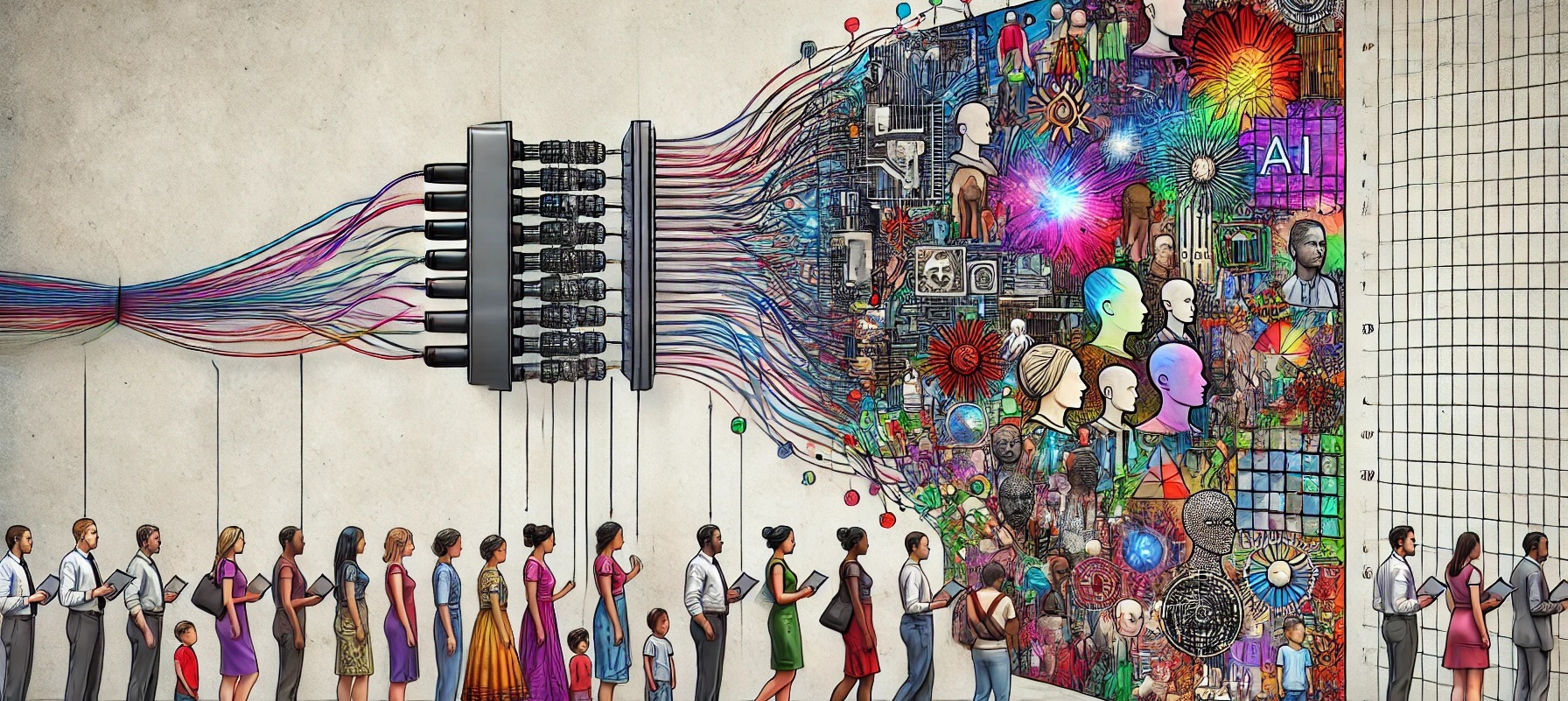
Getting diversity & inclusion right
A good number of Fortune 500’s have been setting best practices and leading the way in the complicated field of Diversity and Inclusion, yet, others are still questioning the why’s and how’s of D&I. Many organizations face a new reality: a changing workforce, intensifying war for talent, and customer expectations are driving them to take a stand, act, and adopt Diversity and Inclusion as a business and brand imperative.
If your organization is starting out on this journey, it is important to see these two elements as unique and intertwined. Diversity means creating a heterogeneous talent pool, while inclusion is cultivating an environment of ‘belonging’ for everyone.
Here is a simple guide to help you get off to a good start:
1- What diversity do you need?
Gender, age, ability, LGBTQ or ethnicity? Will you choose one or more attributes – and why? Be aware of your talent pool and how diversity can take it to the next level. How does your current state compare to the regions where you want to grow, or to your customer or stakeholder needs? What about your brand reputation or your competitors? What does diversity mean to you? Inclusion is different – it is the glue that binds and brings the best out of your diverse talent pool. This needs a separate strand of work within your Diversity & Inclusion (D&I) strategy.
2- How does diversity fit your business strategy?
Too often, organizations confuse great intentions and ‘activities’ with an impactful D&I strategy. D&I must always make good business sense. What are your key strategic and business reasons for adopting D&I? For example, if growth is projected in Asia, does your talent pool reflect that footprint? What strategic benefits come from diversity and inclusion? What happens if you do nothing? Are you attracting the best? Do they stay? The global war for top talent is only intensifying. This talent wants to work for organizations that make them feel included and valued.
3- What is the impact on your communities?
Global organizations play an important role in the communities in which they operate. D&I initiatives must embrace and reflect the diversity of these communities. Does your business require engagement with different stakeholders than in the past? Does your current leadership and high potential talent reflect the world in which you operate? How do you ensure that all talent in your markets has the same opportunities? Is your brand inclusive of all market segments? How do you measure that?
4- Who designs and delivers your D&I strategy?
Is this a junior or senior position? What is the reporting structure? D&I touches on the culture of an entire organization, and this is reflected in the human resources you allocate to its implementation. The quality and seniority of your global head of D&I indicates how seriously your organization takes this challenge. Who will lead your D&I strategy? Do you need to outsource until in-house skills are developed? Does this person have the ‘weight’ and credibility necessary? Are they positioned for utmost impact and support? Will they have sufficient budget and headcount? What role will you give to your HR function, your leaders and your employees in this journey?
5- Are you ready for difficult conversations and tough decisions?
Dilemmas and conflicts will arise, opinions will override agreements, and personal biases will hinder conversations. Are you willing to make the hard decisions? For example, what do you do when equally qualified candidates appear? How will you handle potential versus experience? Will you lead by talking or doing? How will you reward early adopters and champions? How will you deal with blockers? How will you hold your leaders accountable? How do you ensure a resilient and relentless focus on the delivery of your D&I strategy?
| Do | Don’t |
|---|---|
| Employ a full-time, senior leader with proven, global D&I experience | Set the role at junior level or think someone can ‘learn it’ quickly |
| Adopt a robust D&I change management approach | Think it will take care of itself through random diversity-related actions |
| Provide appropriate headcount and budget | Expect one full- or part-time person to make a difference |
| Set traceable stretch targets and measure success | Shy away from clear and tangible targets |
| Make it part of the talent framework: Address leadership and hold everyone accountable | Think right behaviors are implied and understood by all |
| Revisit all HR processes to eliminate hidden hurdles and embed D&I | Create a list of random diversity actions to look like ‘something is being done’ |
| Consider it a Culture Change initiative | Restrict it to HR or legal |
| Communicate D&I as driving innovation and growth | Present it as a zero-sum game |
| Focus on early wins and people’s good intentions | Focus exclusively on what doesn’t work, and hidden privileges |
| Understand some groups may be unhappy about change and create bridges | Allow personal opinions and emotions to become barriers |
| Lead by example | Avoid difficult decisions and conversations |
| Realize it’s an ongoing journey with highs and lows | Look at it as a program with a beginning and an end |
Research Information & Knowledge Hub for additional information on IMD publications

Embracing greater diversity is key as new EU legislation mandates stronger female representation on corporate boards. Diana Markaki shares expert guidance.

Campaign failures at Apple, Bud Light, & Jaguar show why boards must prioritize marketing oversight. Insights from Su-mei Thompson.

Explore an IMD white paper with Microsoft and EqualVoice, launched at Davos, addressing GenAI bias risks and offering survey insights and recommendations.
The China Resources Beer (CR Beer) case study is a compelling narrative of the world’s largest beer producer by volume under the leadership of CEO Hou Xiaohai. In 2016 CR Beer embarked on a pivotal transformation journey. This case study offers cr...

Corporate DE&I is not simply a question of fairness. Implemented successfully, it pays off for both the company and society in general. Here's how it's done.

Unlock the full potential of talent and innovation by ensuring equal opportunity and representation across race, gender, and background. Explore the Theory of Equality.
In today’s rapidly evolving business landscape, fostering diversity, equity, and inclusion (DEI) is not just a moral obligation but a strategic imperative. As global markets expand and societies become more diverse, businesses that champion inclus...

By fostering a ‘we’ culture of sharing, respect, and gratitude, leaders can transform their organizations to shine in an inclusive world, writes Shelley Zalis

Effectively integrating ethics, values, and diversity is vital for responsible leadership. Here is a guide to decision-making in the ‘gray zone’.
The case focuses on Rede Mulher Empreendedora (RME), Brazil’s largest support platform for female entrepreneurship, and its founder, Ana Fontes. Founded in 2010, RME had grown into a significant network by 2023, impacting the livelihoods of over 1...
in I by IMD
Research Information & Knowledge Hub for additional information on IMD publications
in I by IMD
Research Information & Knowledge Hub for additional information on IMD publications
Research Information & Knowledge Hub for additional information on IMD publications
Research Information & Knowledge Hub for additional information on IMD publications
in I by IMD Brain Circuits 22 January 2025
Research Information & Knowledge Hub for additional information on IMD publications
in I by IMD
Research Information & Knowledge Hub for additional information on IMD publications
in Binder, Julia Katharina (Ed.); Haanaes, Knut Bjarne (Ed.) / Leading the sustainable business transformation: A playbook from IMD, pp. 319-329 / Hoboken: Wiley, 2025
Research Information & Knowledge Hub for additional information on IMD publications
in I by IMD Magazine December 2024, no. 16, pp. 44-45
Research Information & Knowledge Hub for additional information on IMD publications
Research Information & Knowledge Hub for additional information on IMD publications
Case reference: IMD-7-2613 ©2024
Research Information & Knowledge Hub for additional information on IMD publications

